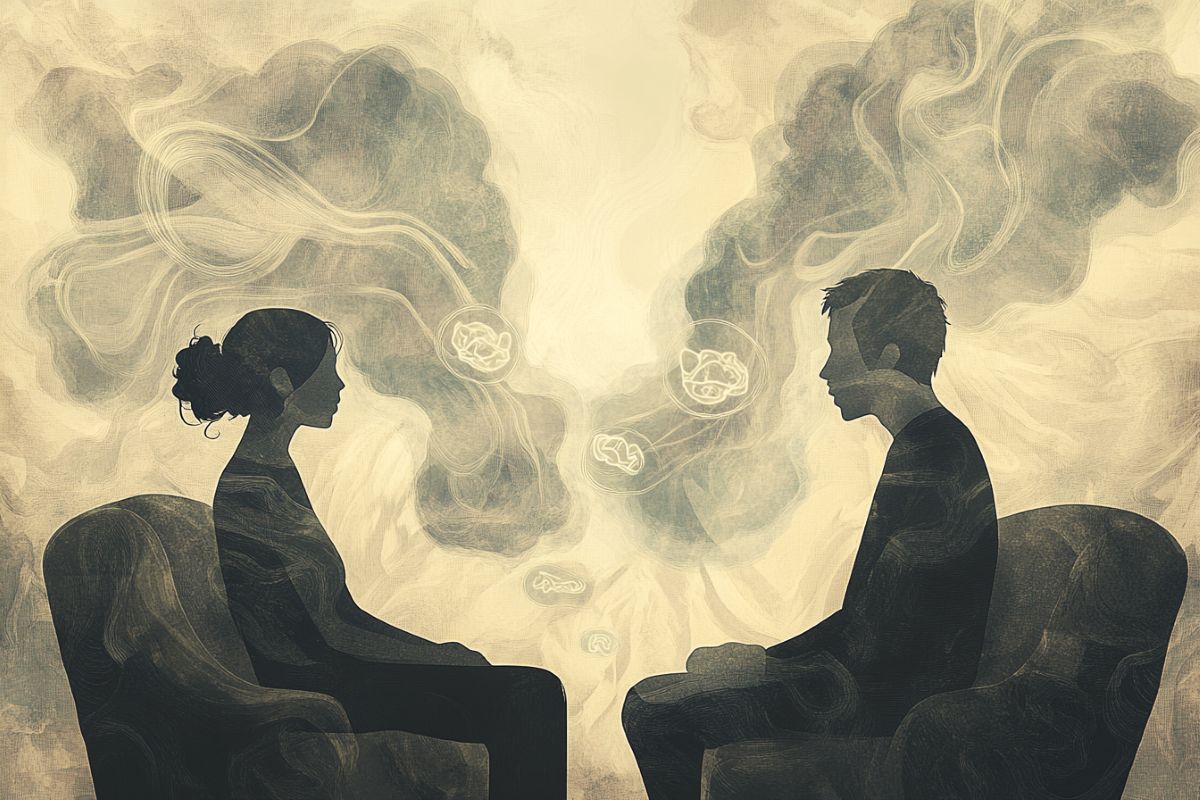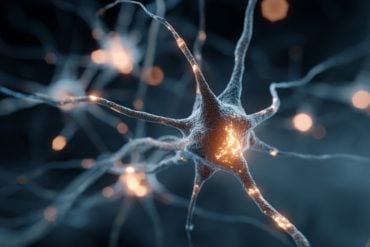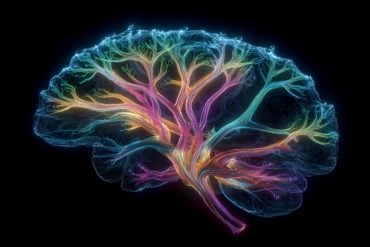Summary: New research reveals that fear of emotions may explain why individuals with PTSD symptoms often struggle to communicate with romantic partners. The study found that people with higher PTSD symptoms were more likely to fear strong emotions, which led to less constructive and more conflict-driven communication styles.
These emotional fears contribute to patterns like demand-withdraw behavior, where one partner pressures and the other retreats, reinforcing both relationship strain and PTSD symptoms. Researchers emphasize that addressing fear of emotions alongside PTSD symptoms may improve communication and support recovery.
Key Facts:
- Emotional Fear Link: PTSD symptoms are associated with fear of strong emotions, impacting communication.
- Destructive Patterns: Fear of emotions increases demand-withdraw dynamics in couples.
- Treatment Opportunity: Addressing both PTSD and emotional fears can improve relationships and healing.
Source: Penn State
People with post-traumatic stress disorder (PTSD) symptoms often have trouble communicating and resolving relationship difficulties with their romantic partners, according to previous research by Steffany Fredman, associate professor of human development and family studies at Penn State, and others.
In a new study, Fredman and others have found that some of these problems may stem from people’s fear of their emotions.

The researchers collected data from 64 opposite-sex couples in which both members of the couple had experienced a traumatic life event. The researchers analyzed PTSD symptom data from each member of the couple about perceived negative consequences if they feel strong emotions and how they and their partner tend to communicate.
Results published in Behaviour Research and Therapy demonstrated that people with higher levels of PTSD symptoms experienced greater fear of their emotions, which was associated with less constructive communication and more unproductive communication with their partners.
“In this study, we were trying to understand why people with PTSD symptoms have trouble resolving relationship difficulties with their romantic partners,” Fredman said.
“Generally speaking, people with PTSD view themselves and other people negatively, and the resulting mistrust, anger, avoidance, withdrawal and emotional numbing put strain on their romantic relationships. Experiencing your feelings, trusting people and connecting with others are all important ingredients for healing from PTSD.”
PTSD can create a vicious cycle, according to Fredman. Behavior triggered by PTSD symptoms such as aggression, avoidance, withdrawal and numbing may strain relationships, and relationship discord can maintain PTSD symptoms. This cycle continues unless something changes.
Fredman co-developed couple-based treatment for PTSD to disrupt this cycle. Individuals with PTSD often experience emotions as dangerous and a trigger — or a trauma reminder — because strong emotions were felt during or after their trauma.
Since romantic relationships evoke many strong emotions, people may experience emotionally evocative interactions with their partners as threatening and can engage in behaviors to neutralize this perceived threat, such as becoming aggressive and/or withdrawing.
When one or both partners develop unhealthy coping skills, strained romantic relationships can reinforce the symptoms of PTSD. On the other hand, relationships in which people can both express themselves and listen can promote recovery from PTSD, she said.
In the current study, the researchers recruited people with a broad range of PTSD symptoms and symptom severity. Studying people with a broad range of severity allowed the research team to understand the ways that more or less severe symptoms were likely to affect communication in a relationship.
The researchers interviewed participants about their PTSD symptoms and asked participants whether they feared their emotions. They also asked whether they typically communicate constructively — which involves collaborative problem solving, listening, suggesting compromises and expressing one’s feelings; whether they demand while their partner withdraws; and whether their partner demands while they withdraw when relationship issues arise.
In demand/withdraw communication, one partner complains, nags or otherwise tries to demand a response from their partner. The other partner responds by withdrawing and avoiding the interaction. Typically, Fredman said, the more one person withdraws, the more the other partner demands.
This type of communication does not facilitate problem solving and often leaves issues unresolved. Unproductive and unresolved conflict can maintain PTSD symptoms by reinforcing perceptions of interpersonal threat and negative views of oneself and the other partner, Fredman continued.
Study participants who reported higher levels of PTSD symptoms were more likely to report fear of their emotions. Additionally, those who reported greater fear of their emotions were less likely to report constructive communication and were more likely to report that they demand while their partner withdraws and that their partner demands while they withdraw.
This study is the first to identify that fear of emotions has interpersonal consequences, according to Fredman, meaning the fear influences how people interact with one another.
“When we only looked at PTSD symptoms and communication without considering a person’s fear of their emotions, there were relatively few direct connections we could identify,” Fredman said.
“When we looked at the connections between PTSD symptoms and fear of emotions and then examined the connections between fear of emotions and communication styles, the connections became clear. This suggests that fear of emotions is an important influence on the communication style of couples where one or both people have PTSD symptoms.”
Prior work by Fredman and colleagues demonstrated that individuals with elevated PTSD symptoms had difficulties regulating their own emotional arousal during laboratory-based conversations with their partners about their relationships.
More specifically, they responded to their own emotional arousal and the emotional arousal communicated through their partner’s voice in a manner consistent with emotional arousal serving as a trauma cue.
The current study extended this prior work by demonstrating that individuals’ PTSD symptoms may predispose them to catastrophic thoughts about feeling strong emotions and that such thoughts may be why couples in which one or both partners have elevated PTSD symptoms tend to have a hard time communicating constructively.
“Other research we conducted has shown that couple therapy can effectively reduce PTSD symptoms and improve relationship communication, even in just a single weekend,” Fredman said.
“This latest study reveals more nuance about how PTSD symptoms, fear of emotions and communication difficulties are connected and why they should be treated at the same time.”
Jeesun Lee, graduate student in human development and family studies at Penn State; Yunying Le, who earned her doctorate in human development and family studies in 2019 and worked as a postdoctoral fellow at Penn State and is now research assistant professor at University of Denver; Emily Taverna, who earned her doctorate in 2023 psychology at Penn State and is now Advanced Fellow in Women’s Health at the Women’s Health Sciences Division of the National Center for PTSD; and Amy Marshall, professor at Virginia Tech, also contributed to this research.
Funding: The National Center for Advancing Translational Science, the Karl R. Fink and Diane Wendle Fink Early Career Professorship for the Study of Families, the Edna P. Bennett Faculty Fellowship in Prevention Research and the Joseph and Jean Britton Graduate Fellowship from the College of Health and Human Development at Penn State funded this research.
About this PTSD and communication research news
Author: Christine Yu
Source: Penn State
Contact: Christine Yu – Penn State
Image: The image is credited to Neuroscience News
Original Research: Open access.
“Associations among PTSD symptoms, fear of emotion, and couple communication difficulties: A between-person dyadic analysis” by Steffany Fredman et al. Behavioral Research and Therapy
Abstract
Associations among PTSD symptoms, fear of emotion, and couple communication difficulties: A between-person dyadic analysis
This study investigated between-person associations among PTSD symptoms, fear of emotion, and perceived couple communication difficulties in a dyadic context among 64 trauma-exposed, mixed gender community couples (N = 128 individuals) using the Actor-Partner Interdependence Mediation Model.
Individuals with higher PTSD symptoms endorsed greater fear of their emotions (βMen = .72; βWomen = .49), and those with greater fear of their emotions reported lower levels of constructive couple communication (βMen = −.19; βWomen = −.21) and higher levels of self-demand/partner-withdraw communication (βMen = .20; βWomen = .25) and partner-demand/self-withdraw communication (βMen = .26; βWomen = .33) with their partners.
Additionally, women whose partners had higher PTSD symptoms endorsed greater fear of their emotions (β = .30).
The most robust indirect PTSD-communication links were between (a) individuals’ PTSD symptoms and their perceptions of partner-demand/self-withdraw communication when accounting for associations with fear of their emotions and (b) men’s PTSD symptoms and women’s perceived partner-demand/self-withdraw communication accounting for associations with women’s fear of their emotions.
Men with higher PTSD symptoms also reported greater self-demand/partner-withdraw communication (β = .28), independent of their fear of emotion.
Couple-based treatments for PTSD that promote emotional tolerance and are sensitive to gender differences in how PTSD symptoms relate to each partner’s perception of the man-demand/woman-withdraw communication pattern may improve trauma survivors’ relationship functioning and increase the potential for relationships to serve as a conduit for recovery from PTSD.






